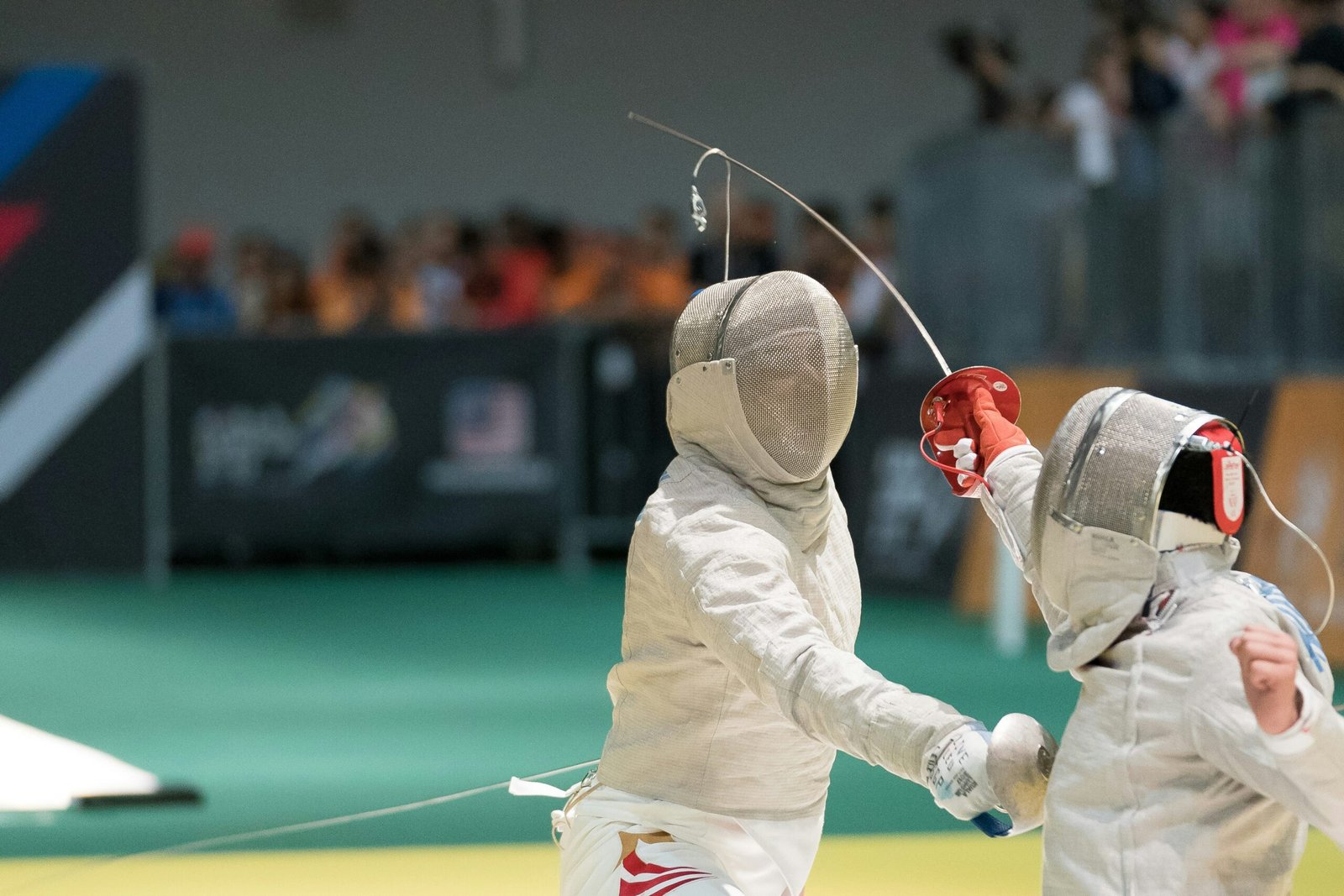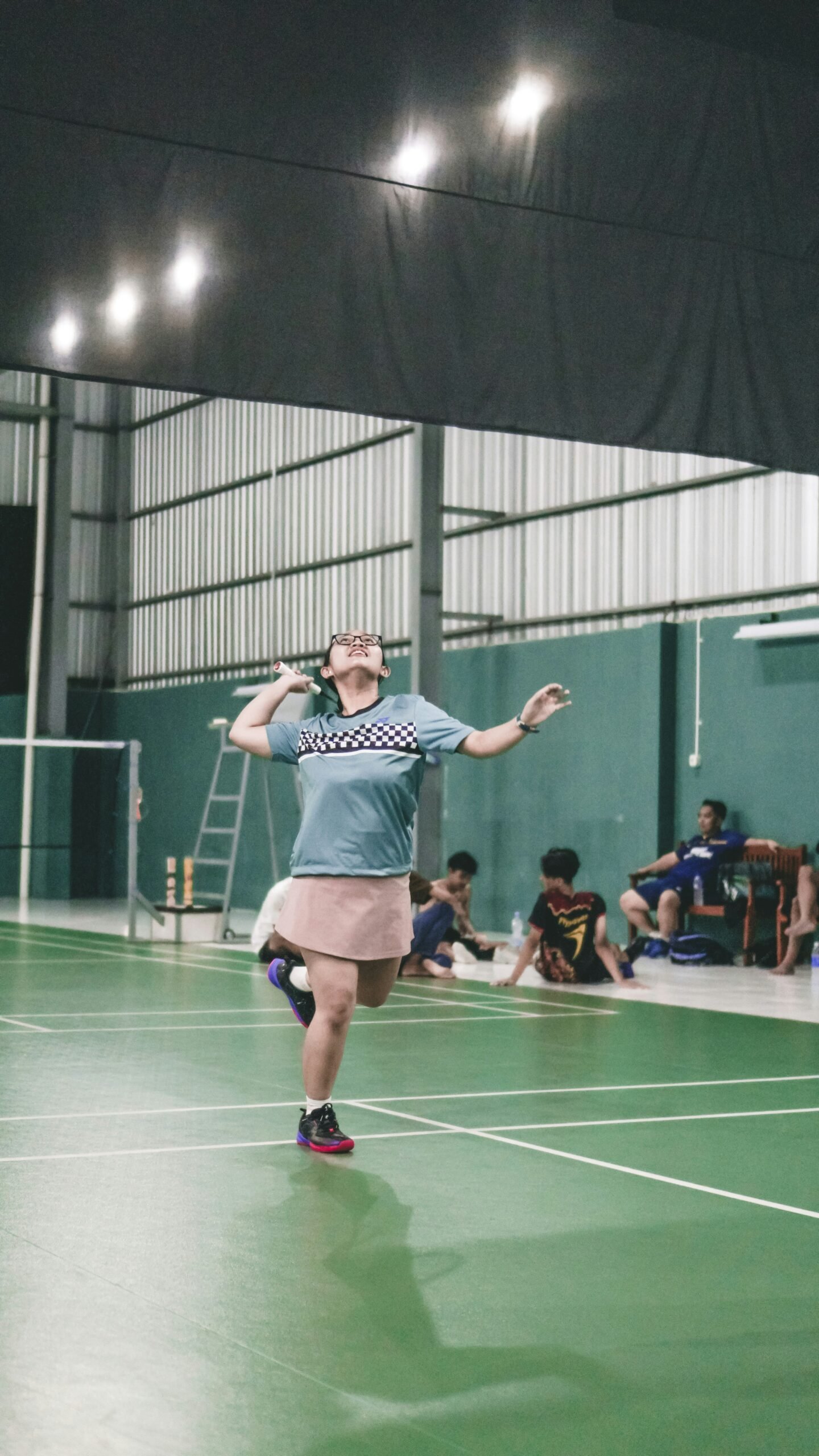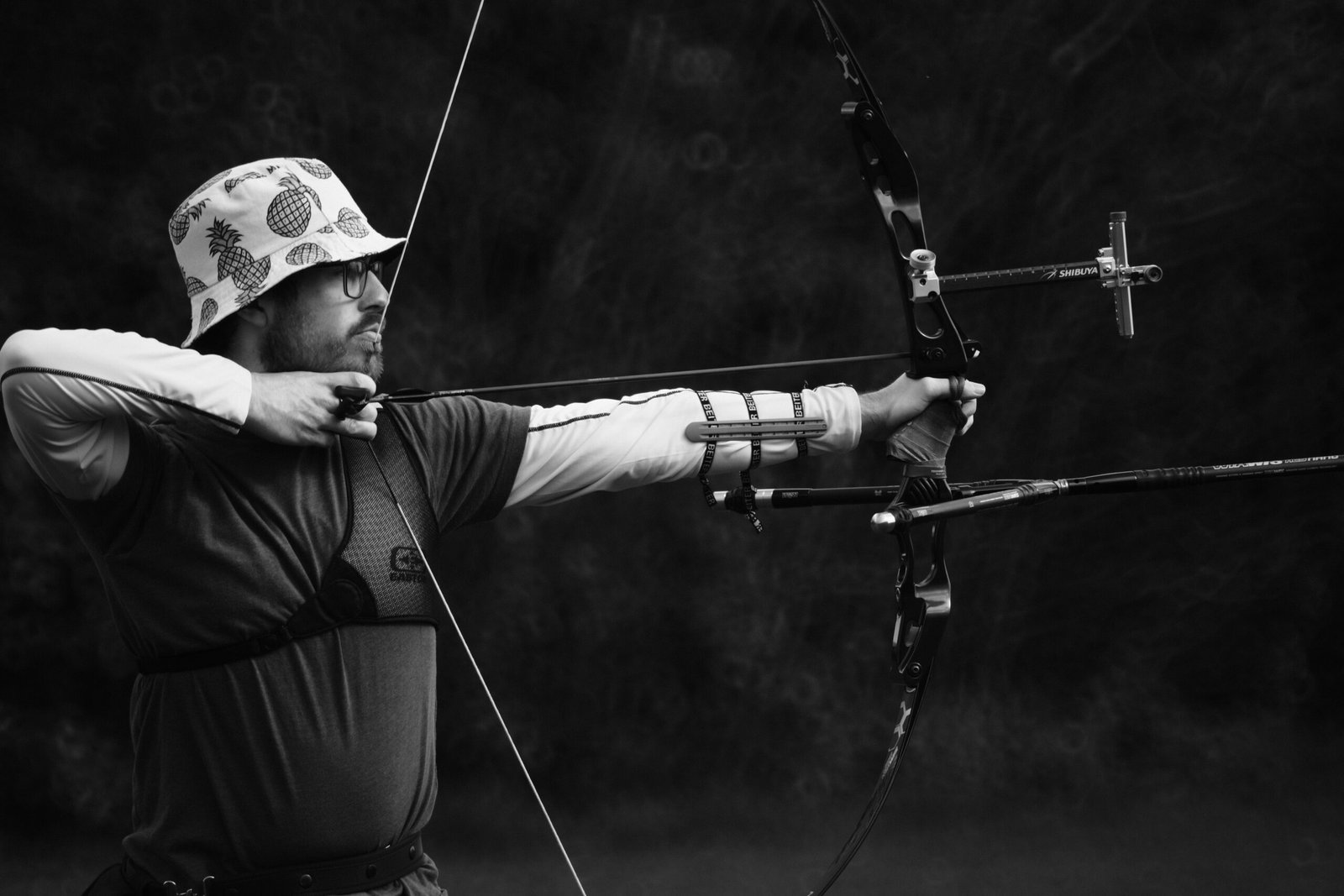Introduction to Fencing
Fencing is a centuries-old martial art that has evolved into a prominent competitive sport, captivating both practitioners and spectators. As an Olympic discipline, it combines physical agility with mental strategy, making it a unique form of combat that requires skill, speed, and precision. Traditionally, fencing involves the use of various bladed weapons, namely the foil, epee, and sabre, each characterized by its own set of rules and techniques. This diversity not only reflects the historical development of the sport but also contributes to its rich complexity.
At its core, fencing emphasizes the principles of distance, timing, and control. Practitioners, known as fencers, are trained to engage in bouts that require acute reflexes and rapid strategic thinking. The sport’s structure mandates the use of protective gear, including masks, jackets, and gloves, ensuring a balance between competition and safety. This emphasis on protection allows fencers to engage in dueling, exercising their skills in a controlled environment, ultimately enhancing their mastery of both technique and tactics.
As a form of martial art, fencing encapsulates a blend of discipline and artistry. The fluid movements and choreographed actions of fencers can be likened to a dance, showcasing not only physical prowess but also aesthetic grace. Fencing has held historical significance as a method of combat, often associated with the chivalric values of honor and courage. It served not only as a means of self-defense but also as a rite of passage for nobility throughout history. Today, it stands as a symbol of both tradition and modern competition, bridging the gap between its historic roots and its future in the sporting world.
Origins of Fencing: Ancient Times
The origins of fencing can be traced back to ancient civilizations, where the practice developed as a vital combat skill. In ancient Egypt, wall art and inscriptions depict warriors engaging in armed combat, showcasing the usage of various weapons such as the sword and spear. The Egyptians emphasized training, and their soldiers were taught to wield these weapons effectively, paving the way for methods of engagement that would influence future fencing techniques.
In ancient Greece, the culture of physical prowess and martial training was prominent. Fencing, or the art of combat with swords, was part of the training regimen for soldiers and athletes. The Greeks employed various weapons, including the xiphos, a short sword, and the kopis, a curved sword. Historical texts reveal that the Greeks valued skill and technique, incorporating fencing into their military training and competitive sports. The concept of athletic competition led to the organization of contests where swordsmen could refine their skills against opponents, which laid a foundation for modern fencing.
The Romans further developed fencing as a martial art, elevating it to a structured component of military training. They utilized a range of weapons, including the gladius, a short sword used by infantry, which required precise handling. The Roman army’s rigorous training programs emphasized the importance of close-quarters combat, with dueling becoming a recognized skill among soldiers. This focus on mastery and discipline in arms signified the transition from mere survival tactics to a refined sport.
As these ancient civilizations contributed to the evolution of fencing techniques, the practice became ingrained in the cultural context of warfare and defense. The skills developed in these early societies not only served practical purposes but also laid the groundwork for the rich tradition of fencing that would evolve into a sport recognized worldwide today.
The Birth of Swordsmanship in the Middle Ages
The emergence of swordsmanship in the Middle Ages can be traced back to the socio-political landscape of Europe during this era. As feudalism became the dominant system, the noble class acquired the means and reasons to engage in combat, not only against external threats but also in disputes among themselves. Dueling emerged as a formalized method to resolve conflicts, reflecting a society that valorized honor and personal prowess. This cultural backdrop provided fertile ground for the refinement of sword-fighting techniques and the development of various weapons.
During this period, the sword evolved from a strictly utilitarian tool into a symbol of status and martial skill. Distinct types of swords began to appear, each designed for specific combat situations. The arming sword, often employed by knights in battle, became a standard weapon due to its balance and versatility. Concurrently, more specialized weapons evolved, such as the rapier, which later became prominent in civilian dueling contexts. This adaptation illustrates the progression in both phasing of warfare and the ceremonial nature of combat as society began to lean toward more structured and ritualized forms of conflict resolution.
As swordsmanship continued to develop, so too did the documentation of techniques and strategies through the creation of fencing manuals. These texts, authored by various fencing masters, not only codified fighting techniques but also highlighted the philosophical and moral implications of swordplay. Masters such as Johannes Liechtenauer and Sigmund Ringeck made significant contributions, establishing foundational principles that shaped the martial art. Their works served as crucial resources, effectively linking the physicality of swordsmanship with intellectual and ethical considerations. This period, therefore, marked a critical transition in the understanding and practice of fencing, setting the stage for its evolution into an organized sport.
Renaissance Fencing: The Art of Dueling
The Renaissance period, spanning the 14th to the 17th century, marked a significant transformation in the practice and perception of fencing. During this time, fencing evolved from mere combat techniques into a structured art form, influenced by cultural advancements and social changes. The period saw the creation of numerous influential fencing schools and treatises that formalized the principles of dueling. Pioneering figures, such as Fiore dei Liberi and George Silver, emerged, each contributing unique philosophies and methodologies to the fencing discipline. Their works provided systematic approaches, aligning technical skills with theoretical knowledge, reinforcing fencing as both an art and a science.
The emphasis on honor during the Renaissance significantly influenced the practice of dueling. Fencing was not merely a physical confrontation but rather a means to resolve disputes, maintain social status, and defend one’s honor. Duels were carefully orchestrated events guided by strict codes of conduct, encompassing rules of engagement and the type of weapons permissible. Participation in a duel required not only skill but also adherence to these societal norms, reflecting the importance of honor and reputation in Renaissance society.
Social norms played a crucial role in shaping the fencing landscape of the time. As the social hierarchy began to shift, dueling became a prevalent practice among the nobility, who viewed proficiency in fencing as a vital component of gentlemanly conduct. Fencing schools began to flourish, providing instruction on etiquette, technique, and strategy, thus propagating a culture centered around mastery in this martial art. The intertwining of social status and fencing established a legacy that would influence generations to come, solidifying the art of dueling as an integral aspect of Renaissance life.
Transition from Dueling to Sport: The 19th Century
The 19th century marked a significant transition in the perception and practice of fencing. Historically, fencing was viewed primarily as a method of personal combat, often associated with dueling to resolve disputes or defend one’s honor. However, as societal views evolved and violence became less socially acceptable, the nature of fencing began to change. By the mid-19th century, this martial art started shifting towards a regulated sport, emphasizing skill, discipline, and competition over lethal outcomes.
One of the notable changes was seen in fencing techniques. The emphasis moved from the aggressive, lethal maneuvers of dueling to more refined techniques geared towards scoring points in a competitive environment. Coaches and masters began developing styles that prioritized agility, precision, and strategic thinking. This period led to the systematic study of fencing techniques, which contributed to the establishment of formal training programs and schools. Techniques were often codified, allowing for a more standardized approach that could be taught and practiced beyond the traditional one-on-one combat scenario.
The introduction of protective gear was another pivotal development during this era. To facilitate safer practice, fencers began wearing protective equipment such as masks, gloves, and jackets. The evolution of these protective items significantly reduced the risk of injury during training and competitions, making fencing more accessible to a wider audience. Protective gear not only enhanced safety, but it also contributed to the perception of fencing as a sophisticated sport rather than a violent duel.
Formal competitions began to emerge in the latter half of the 19th century, laying the groundwork for what would become modern fencing. National and international championships were organized, and the establishment of federations helped to formalize the rules and regulations governing the sport. These competitions fostered a sense of community among fencers and encouraged the sharing of techniques and strategies, further solidifying fencing’s transition from a means of personal combat to a respected competitive sport.
The Formation of Modern Fencing Federations
The evolution of fencing into a recognized sport has been significantly influenced by the formation of various national and international fencing federations. One of the pivotal milestones in this evolution was the establishment of the Fédération Internationale d’Escrime (FIE) in 1913. Founded in Paris, the FIE aimed to unify the disparate rules and regulations that were being used across different countries, thereby creating a standardized framework for the sport. This was a crucial step in transitioning fencing from its informal, duel-based origins to a structured competitive activity that could be regulated and governed.
The FIE has played an essential role in organizing international competitions, including world championships and the Olympic Games. By creating uniform rules for equipment, scoring, and conduct, the FIE ensured that athletes from various nations could compete on a level playing field. This standardization was not just about fairness; it also helped to promote the sport globally, increasing its appeal and facilitating international competitions.
In addition to the FIE, national federations began to emerge across the world, each responsible for the administration of fencing within their respective countries. These federations worked to develop grassroots programs, coach education, and athlete development initiatives, further professionalizing the sport. They collaborated closely with the FIE to ensure that their local rules aligned with international standards. This cooperation between national federations and the FIE aided in fostering the growth of a cohesive global fencing community.
As the 20th century progressed, the organizational structure of fencing began to mirror that of other established sports, complete with rankings, seasonal competitions, and athlete training programs. The formalization of fencing through these federations ultimately laid the groundwork for fencing’s inclusion as a prominent sport in the Olympic program, attracting athletes from diverse backgrounds and enhancing the sport’s visibility.
Fencing in the Olympic Games
Fencing made its debut in the modern Olympic Games in 1896, coinciding with the inaugural event in Athens, Greece. Initially, the sport featured only men’s épée and foil disciplines. Over the years, the Olympic program expanded to include women’s events, first introduced in 1924. Today, the Olympics showcase a range of fencing disciplines including foil, épée, and sabre for both men and women, highlighting the sport’s growth and inclusivity.
The evolution of fencing in the Olympic context reflects significant changes in techniques, rules, and equipment, shaping the competitive landscape. Key historical moments have marked the sport’s journey, such as the introduction of electronic scoring systems in the late 20th century, which enhanced accuracy and fairness during competitions. This technological advancement allowed for a dramatic refinement in the quality of the sport, making it more engaging for spectators and participants alike.
Notable athletes have risen to prominence on the Olympic stage, leaving an indelible mark on the sport’s history. Fencers like Christian d’Oriola, who won multiple gold medals in the 1940s, and the legendary Valentina Vezzali, who secured six Olympic golds throughout her career, have become synonymous with excellence in fencing. Their remarkable achievements and mastery of techniques have inspired generations of fencers, contributing to the legacy of the sport in Olympic history.
As the Olympic Games continue to evolve, fencing maintains its position as a prestigious and respected sport on this global stage. The enduring legacy of fencing in the Olympics showcases not just the athleticism but also the artistry and discipline inherent in the sport, appealing to both competitors and fans around the world. In conclusion, the history of fencing within the Olympic Games encapsulates a rich tapestry of historical significance, triumph, and the unyielding spirit of sport.
The Modern Era of Fencing: Today and Beyond
Contemporary fencing has significantly evolved from its historical roots, characterized by the specialization of three main disciplines: foil, épée, and saber. Each variation offers unique rules and strategies, catering to different styles of combat. The foil focuses on points scored with a thrust, targeting the torso, while épée allows the fencer to hit any part of the opponent’s body, rewarding precision and tactical finesse. Saber, on the other hand, combines cutting and thrusting actions, with a target area that encompasses the upper body, creating a fast-paced and dynamic engagement.
Technological advancements have radically transformed fencing equipment. Modern blades are crafted from advanced materials to enhance durability and performance while lightweight protective gear ensures maximum mobility without compromising safety. Additionally, electric scoring systems have replaced traditional methods, providing instantaneous feedback on touches and enhancing the overall spectator experience. These innovations have not only made the sport safer but have also elevated its competitive standards, allowing fencers to focus on skill development rather than equipment limitations.
The reach of fencing has expanded globally, with numerous countries developing strong fencing traditions and programs. Youth fencing initiatives have emerged in schools and community centers, introducing younger generations to the sport’s discipline and athleticism. This growing interest is further amplified through media representation, including documentaries, feature films, and reality shows that portray fencing both as a competitive sport and an art form. The portrayal of fencing in pop culture enhances its visibility, attracting new participants and fostering appreciation among diverse audiences.
As fencing continues to evolve, the integration of advanced training techniques, sports psychology, and physical conditioning regimes ensures that athletes are better prepared for the rigors of competition. The community surrounding modern fencing remains active, with ongoing efforts to promote inclusivity and diversity within the sport, paving the way for future generations of fencers.
Conclusion: The Future of Fencing
Fencing has a rich and storied history, transitioning from a means of personal combat to a celebrated Olympic sport. This evolution highlights the sport’s adaptability and its ability to resonate with diverse audiences across different eras. As we look ahead, it is essential to recognize both the challenges and opportunities that lie before this ancient discipline.
One significant challenge facing fencing is the need to broaden its appeal. Traditionally perceived as an elite or niche activity, fencing organizations and clubs are actively working to enhance inclusivity and accessibility. Initiatives aimed at engaging underrepresented communities are crucial for fostering a more diverse participant base. By introducing fencing into school curriculums, hosting community events, and providing affordable gear, the barriers to entry can be lowered, making it accessible to all.
Moreover, the future of fencing may also see technological innovations that could redefine training and competition. Advanced equipment, such as smart swords and enhanced scoring systems, could provide athletes and coaches with valuable real-time data, improving performance and enriching viewer experience. Additionally, the growing influence of digital platforms offers new avenues for promoting fencing as a sport, reaching wider audiences through social media, virtual competitions, and online coaching. This digital presence is crucial, especially for reaching younger generations who are increasingly engaged with technology.
Furthermore, as global sporting events evolve, fencing must continue to adapt to maintain its competitive edge and relevance in a rapidly changing landscape. The sport’s governing bodies are tasked with ensuring that fencing remains a dynamic and exciting spectacle. By focusing on its rich heritage while embracing the possibilities of modernization, the future of fencing appears promising—one that balances tradition with innovation.








+ There are no comments
Add yours